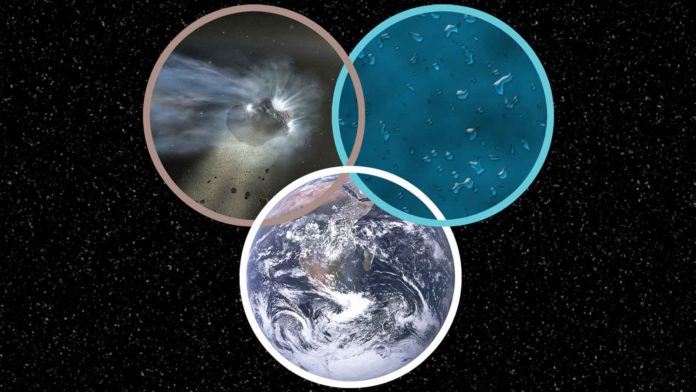The Comet Wirtanen- also known as Christmas comet flew close to Earth in December 2018, contained ‘a vast reservoir of Earth-like water’ similar to that which is in our oceans today.
The Stratospheric Observatory for Infrared Astronomy, SOFIA, the world’s largest airborne observatory, observed the comet during its closest approach. Data collected from the high-flying observatory found that this comet contains “ocean-like” water.
Darek Lis, a scientist at NASA’s Jet Propulsion Laboratory, in Pasadena, California, and lead author of the study said, “We have identified a vast reservoir of Earth-like water in the outer reaches of the solar system. Water was crucial for the development of life as we know it. We not only want to understand how Earth’s water was delivered, but also if this process could work in other planetary systems.”
But there is only limited evidence to suggest the type of water present on our planet is the same kind found in distant comets.
H2O, the water in our seas, consists of two hydrogen atoms, containing one proton and zero neutrons, and one oxygen atom. Another type of water known as “heavy water” has a similar structure, but the hydrogen atom contains one proton and one neutron.
Scientists compared the ratio of these two types of water to establish the origin of the liquid. The D/H ratio in comets usually varies between 1 to 3 times more than that of Earth’s oceans.
Scientists found that the ratio of regular to heavy water was not linked to the origin of the comets – whether they were from the Oort Cloud or the Kuiper Belt. Instead, it was related to how much water was released from ice grains in the comet’s coma compared to directly from the snowy surface. This could imply that all comets could have a heavy-to-regular water ratio similar to Earth’s oceans and that they could have delivered a large fraction of water to Earth.
Dominique Bockelée-Morvan, a scientist at the Paris Observatory and the French National Center for Scientific Research and second author of the paper said, “This is the first time we could relate the heavy-to-regular water ratio of all comets to a single factor. We may need to rethink how we study comets because water released from the ice grains appears to be a better indicator of the overall water ratio than the water released from surface ice.”
According to scientists, further studies are required to check if these findings hold true for other comets. The next time a comet is forecast to fly close enough for this type of study will be in November 2021.
